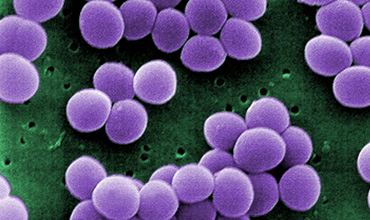Biofilm: Contributing Factor to Drug Resistance in Staphylococci in Blood Stream Infections

Abstract:
Staphylococci represent the most
commonly encountered blood culture isolates from ICU patients. Slime production
is considered to be a significant virulence factor for some strains of
Staphylococci. The importance of the role played by slime is further increased
by its frequent association to reduced antibiotic susceptibility. This study
was done to find out relationship of Bio-Film formation on the susceptibility
pattern of the isolates. 27.6% of the isolates produced biofilm as detected by Congo
Red Agar method; commonest being Staphylococcus epidermidis (53.9%). The percentage of resistance in the group
which produces biofilm is always greater than the group which does not produce
biofilm. Odds ratio for overall drug resistance was 2.10 (with 95% confidence
interval as [1.6 – 2.6]) and with a p-value of 0.006.
References:
[1]. Morales Serrano T, Ramos S, Lara Gonzalez Y, Torres
Colberg H, Vera Quiñones A, Miranda Santiago R, Amill S, Otero M, Cintron V,
Villarreal Morales ML, ' Manatí Medical Center Sepsis
Management Epidemiological Study', Bol Asoc Med P R (2015), Vol.107 No.2 pp.34-39.
[2]. Weinstein M P, Towns
M L, Quartey S M, Mirrett S, Reimer
L G, Parmigiani G, 'The clinical
significance of positive blood cultures in the 1990s: a prospective
comprehensive evaluation of the microbiology, epidemiology, and outcome of
bacteremia and fungemia in adults', Clin Infect Dis. (1997), Vol.24
No.4 pp.584-602.
[3]. Bates
D W, Sands K, Miller E, 'Predicting bacteremia in patients with sepsis
syndrome. Academic Medical Center Consortium Sepsis Project Working Group', J
Infect Dis (1997), Vol.176 pp.1538–1551.
[4]. Aygen B, Yoruk A, Yyldyz O, 'Bloodstream
infections caused by Staphylococcus aureus
in university hospital in Turkey: clinical and molecular epidemiology of
methicillin-resistant Staphylococcus
aureus', Clin Microbiol. Infect. (2004),
Vol.10 pp.309–314.
[5]. Mathur P, Kapil A, Dan B, 'Nosocomial bacteremia
in intensive care unit patients of a tertiary care center', Indian J Med Res. (2005), Vol.122 pp.305–308.
[6]. Ammendolia MG, Di Rosa R, Montanaro R, Arciola CR,
Baldassarri L, 'Slime production and expression of the slime-associated antigen
by Staphylococal clinical isolates', J Clin Microbiol (1999)
Vol.37 pp.3235-3238.
[7]. Amorena B, Garcia E, Monzon M, Leiva J, Oteiza C,
Perez M, 'Antibiotic susceptibility assay for Staphylococcus aureus in biofilms developed in-vitro', J.
Antimicrob. Chemother. (1999),
Vol.44 pp.43 – 55.
[8]. Kotulová D, Slobodníková
L, 'Susceptibility of Staphylococcus
aureus biofilms to Vancomycin, Gentamicin and Rifampin', Epidemiol
Mikrobiol Imunol. (2010), Vol.59
No.2 pp.80-87.

